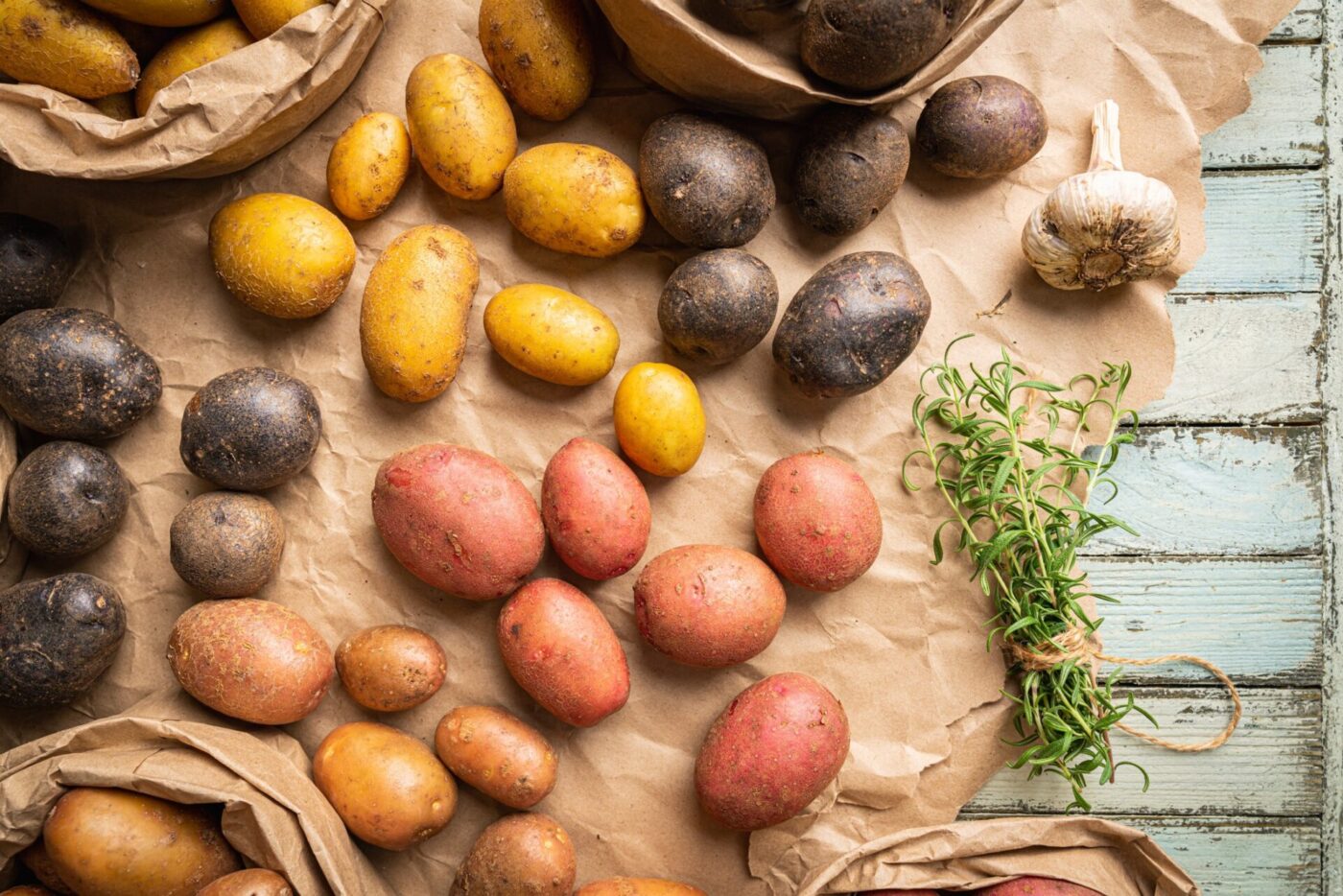Red Skin Gold Potatoes
- These vibrant beauties have a thin red skin and a golden yellow flesh.
- They offer a slightly waxy texture and a mild, buttery flavor. Perfect for roasting, boiling, and potato salads.
Read more here.
When it comes to the world of potatoes, there's a bewildering array of choices. But fear not, spud lovers! This article focuses on a select group known as all-purpose potatoes. These versatile varieties excel in a variety of dishes, making them a staple in any well-stocked kitchen. Let's delve into the world of red skin gold potatoes, Yukon gold potatoes, Kennebec potatoes, and Norland red potatoes, exploring their characteristics and how they can elevate your culinary creations.
The term All-purpose potatoes describes potatoes that fall somewhere between the waxy and starchy extremes. They have a moderate starch content and moisture level, which means they hold their shape reasonably well when cooked but can also be mashed or pureed with a pleasingly smooth texture. This balance makes them suitable for a wide range of culinary applications, offering a convenient and reliable option for home cooks and professional chefs alike. All-purpose potatoes is a general term to describe many different types of potatoes.
If your recipe doesn’t specify what kind of all-porpose potatoes to use, you can use any potatoes in this category.
What makes these potatoes all-purpose? They possess a key balance of two key features:
The beauty of all-purpose potatoes lies in the variety they offer.
Read more here.
Read more here.
Read more here.
Read more here.
The versatility of All-purpose potatoes is their defining characteristic. Here’s a glimpse of their culinary range:
The history of All-purpose potatoes is intertwined with the broader history of potato cultivation. After potatoes were introduced to Europe from South America, farmers and breeders began selecting and cultivating varieties with different characteristics. While some focused on developing highly starchy or distinctly waxy potatoes, others sought a middle ground – potatoes that could perform well in a variety of dishes. These All-purpose potatoes became popular for their versatility and reliability, establishing themselves as a kitchen staple in many parts of the world.
All-purpose potatoes offer a good balance of nutrients:

The all-purpose potato, while not a formally defined botanical category, represents a significant chapter in culinary history. These potatoes, with their balanced starch content, emerged as a response to the evolving needs of cooks and the desire for a versatile ingredient that could bridge the gap between the strictly waxy and starchy varieties. Their story is one of both agricultural innovation and changing culinary preferences.
Before the widespread availability of deliberately bred all-purpose potatoes, cooks often had to choose between distinct potato types for different dishes. Starchy potatoes, like early ancestors of the Russet, were favored for baking and mashing, where their fluffiness was desired. Waxy potatoes, often smaller and with thinner skins, were preferred for boiling and salads, where their ability to hold their shape was paramount.
This specialization, while effective, presented limitations. A cook wanting to make both a potato salad and mashed potatoes might need to purchase two different types of potatoes. This wasn’t always practical, especially for home cooks or in situations where storage space was limited.
While it’s difficult to pinpoint the exact moment the concept of an “all-purpose” potato emerged, we can trace the development of varieties that began to blur the lines. In the 19th and early 20th centuries, as potato breeding became more scientific, new cultivars appeared that offered a more balanced starch content. These potatoes, while not necessarily marketed as “all-purpose,” began to fill the gap. Some white potatoes and red potatoes began to fill this culinary role.
The true turning point in the culinary history of all-purpose potatoes arrived with the development of the Yukon Gold. This Canadian-bred potato, released in 1980, wasn’t just another new variety; it was a deliberate attempt to create the ideal all-purpose potato.
The Yukon Gold’s popularity paved the way for other all-purpose varieties, such as the Kennebec and specific cultivars of red-skinned potatoes like the Red Norland. These potatoes, while possessing their own unique characteristics, share the common trait of adaptability. The all-purpose potato is good at everything but the best at nothing.
The culinary history of all-purpose potatoes is a story of innovation driven by the needs and desires of cooks. From the early, less-defined varieties that bridged the gap between starchy and waxy, to the deliberate creation of the Yukon Gold and its contemporaries, the all-purpose potato has become a cornerstone of modern cooking. It represents a triumph of both agricultural science and culinary practicality, offering a versatile and delicious ingredient that continues to shape how we cook and eat.
As with waxy potatoes, all-purpose potatoes share a general nutritional foundation, with slight variations between varieties. Here’s a typical breakdown for 100g of cooked all-purpose potato (without skin, boiled):
Yukon Gold is arguably the most popular all-purpose potato, and for good reason.
Red Skin Gold potaotes, often have a slightly higher moisture content.
Kennebec potatoes are a reliable all-purpose variety known for their versatility.
Norland Red potatoes are often harvested early, resulting in a slightly lower starch content and a firmer texture.
All-purpose potatoes like Red Skin Gold, Yukon Gold, Kennebec, and Norland Red offer a balanced nutritional profile and exceptional culinary versatility. They provide essential vitamins, minerals, and fiber, making them a valuable addition to a healthy diet. Their ability to perform well in a variety of dishes makes them a convenient and reliable choice for home cooks. By understanding the subtle differences between these varieties, you can choose the best potato for your specific needs and preferences, ensuring delicious and nutritious meals.
All-purpose potatoes may not have the specialized characteristics of their waxy or starchy cousins, but their versatility makes them an indispensable part of any kitchen. They’re the reliable workhorse, the potato you can always count on to deliver good results, whether you’re roasting, mashing, boiling, or frying.
Comments